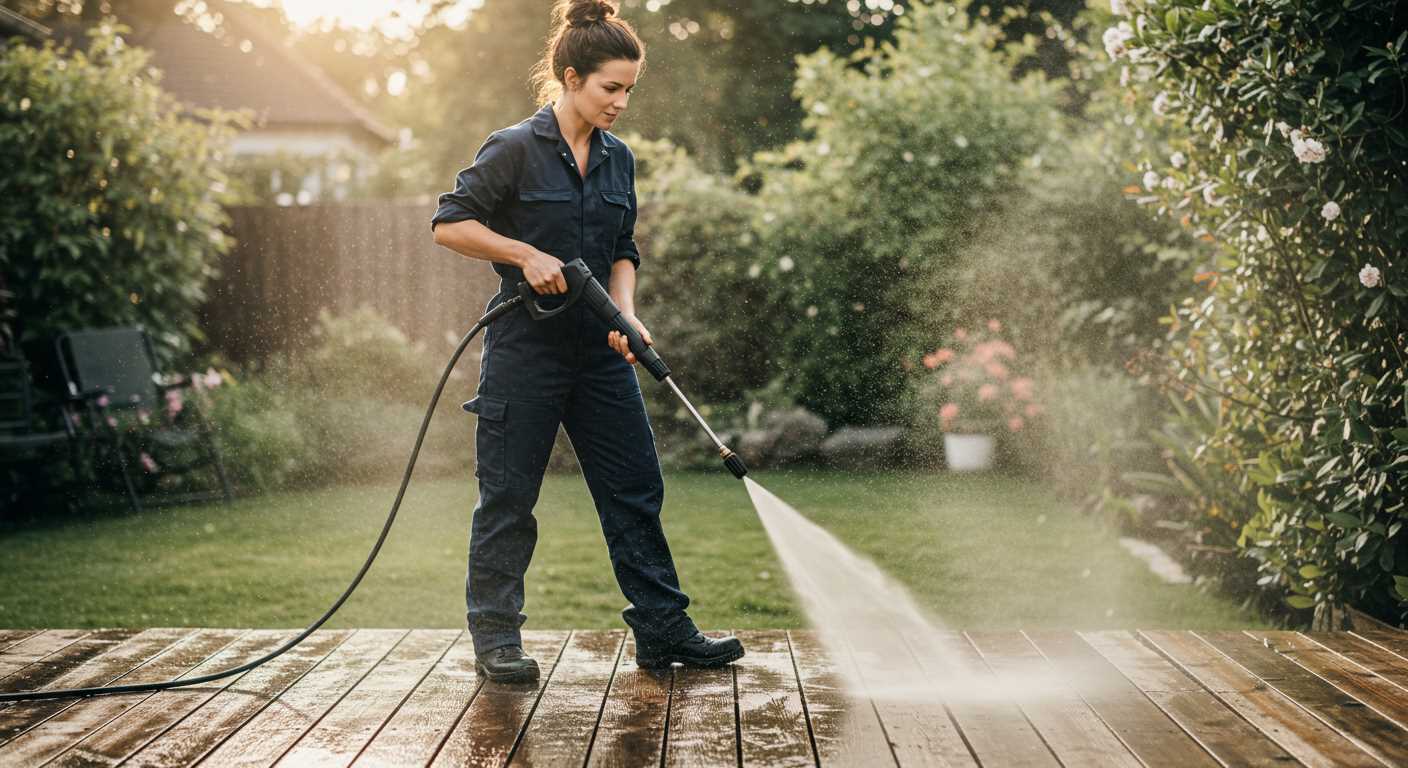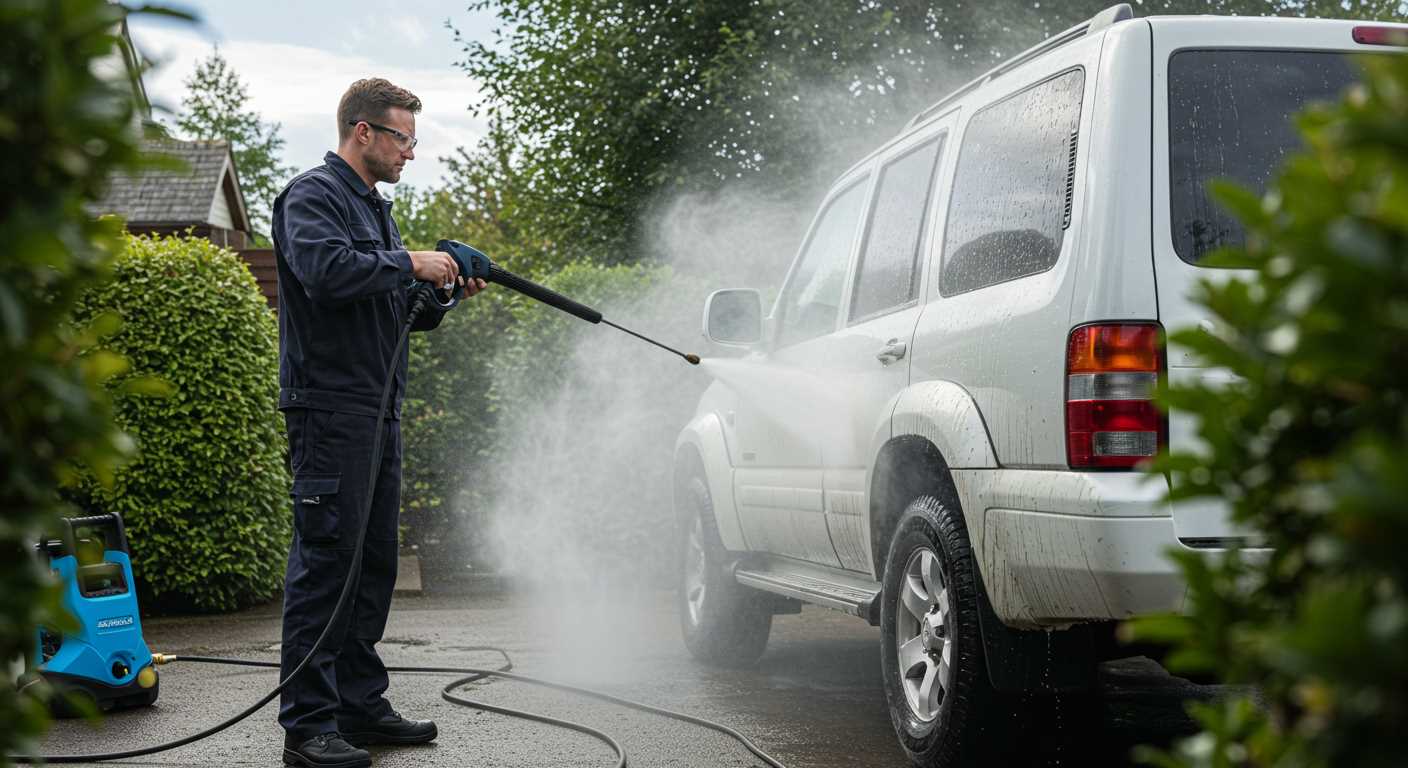



To counteract pulsation during operation, first check the water supply. Insufficient water flow can lead to fluctuating performance. Ensure that the inlet hose is free of kinks and obstructions, and confirm the pressure of your main water source meets the required specifications. A minimum of 5 gallons per minute is typically needed for optimal function.
Next, inspect the filter screen located at the water inlet. Dirt and debris accumulation can restrict water flow, contributing to irregular performance. Cleaning or replacing this filter regularly can prevent many common problems associated with constancy and pressure.
Consider the condition of the nozzle as well. A worn or clogged nozzle can disrupt the steady flow of water. Replacing a damaged nozzle with one that matches your unit’s specifications will often remedy pressure fluctuations. It’s advisable to select a nozzle based on the task at hand to ensure consistent output.
If the issue persists, the pump may be failing. Listen for unusual sounds or observe irregular behaviour while in use. The internal components, like seals or pistons, may need replacement. Regular maintenance and timely repairs will prolong the equipment’s lifespan and maintain performance.
Common Causes of Jerky Operation
To resolve jerky operation swiftly, check the water inlet for clogs. A blocked filter can restrict flow, causing inconsistent water pressure. Clear any debris and ensure the hose is free of kinks. Additionally, examine the connections; ensure they are tight and secure, as loose fittings can generate air leaks, which result in uneven spraying.
Inspecting the Nozzle

The spray nozzle plays a pivotal role in maintaining a steady flow. If it is damaged or clogged, it can disrupt the water stream. Clean or replace the nozzle to restore proper function. Opt for nozzles suited to your cleaning task, as using the wrong type may exacerbate performance issues.
Understanding the Pump Mechanics
A malfunctioning pump can lead to irregular operation. Inspect the pump for signs of wear or damage. Ensure that the pump is adequately lubricated according to the manufacturer’s recommendations. If the pump appears faulty, consult a professional for further evaluation or replacement.
Common Causes of Pressure Washer Pulsation
Start by checking the water supply. Insufficient flow can cause irregular operation. Ensure your garden hose is free from kinks and leaks, and that the water source provides adequate pressure.
- Clogged Filters: Inspect filters and strainers for blockages. Clean or replace them if necessary to maintain optimal flow.
- Unloader Valve Issues: A malfunctioning unloader valve can result in fluctuating output. Test it for proper function and replace if faulty.
- Air Leaks: Leaks in the inlet or supply lines can reduce water intake. Examine connections and seals for integrity.
- Worn or Damaged Pump: Check for wear in the pump components. Over time, seals and piston rings may degrade, leading to pulsating behaviour.
- Incompatible Nozzle: Using the wrong type or size of nozzle can impact flow rates. Ensure compatibility with your machine’s specifications.
Regular maintenance will help identify these issues early. I recommend incorporating routine checks to ensure everything is operating smoothly.
- Inspect and clean filters monthly.
- Check hoses and connections before each use.
- Monitor pump condition annually and replace worn parts proactively.
Adhering to these preventive measures will contribute to consistent and reliable performance.
How a Clogged Filter Affects Pressure Consistency
A clogged filter can lead to significant fluctuations in water flow, disrupting the steadiness of the stream. When debris accumulates, it creates resistance, making the unit work harder to draw water. This imbalance manifests as an inconsistent spray pattern, often resembling surging or stuttering in performance.
I recommend regularly checking and cleaning the filter as part of routine maintenance. Clean filters ensure a smooth flow, allowing the equipment to function optimally. If you notice a drop in performance, examining the filter should be a priority. Depending on how frequently the machine is used and the water source quality, filters may require cleaning or replacement every few months.
Always refer to the user manual for specific instructions on your model. Taking proactive measures to maintain the filter not only smoothens operation but can also extend the lifespan of the device significantly.
Remember, a minor blockage can create a major issue in performance. Prioritising filter maintenance is a simple yet effective way to improve and sustain efficiency in any cleaning task.
The Role of Air in the Water Supply System
Ensure that your system is free from air infiltration to maintain optimal performance. Air trapped in water lines can lead to inconsistencies in flow, causing the equipment to exhibit erratic behaviour during operation.
Check all connections and hoses for leaks. Even the smallest breach can allow air to enter the system, disrupting the water supply. Regularly inspect and replace old or worn-out seals and gaskets to prevent these leaks.
Install an air separator or pressure regulator if your setup lacks adequate components to manage air and pressure levels. These devices help eliminate trapped air and stabilise the water pressure before it reaches the machine.
Keep your water source at a steady level. Fluctuations in incoming water flow can introduce air into the supply. A dedicated water tank can help maintain consistent levels and reduce the likelihood of air pockets forming.
Monitor the system for any unusual sounds, which may indicate air is present in the lines. A hissing or bubbling noise often suggests that air is disrupting the flow of water.
Finally, consider using a water softener if you’re in an area with hard water. Mineral build-up can restrict flow and create air spots, contributing to performance issues.
Impact of Incorrect Nozzle Size on Pressure Output
Using a nozzle that does not match the specifications can cause significant fluctuations in water flow and force. An inappropriate size can lead to low performance or excessive strain on the motor.
Performance Changes
A narrower nozzle increases the intensity of the jet, which can momentarily enhance cleaning capabilities. However, this adjustment can overload the pump, creating inconsistencies in flow. Conversely, a wider nozzle reduces pressure, diminishing effectiveness, particularly for tough stains.
Table of Nozzle Sizes and Their Effects
| Nozzle Size | Effect on Output | Best Use Case |
|---|---|---|
| 0.5 mm | High pressure, narrow spray | Heavy stains on concrete |
| 1.0 mm | Moderate pressure, focused spray | General cleaning tasks |
| 1.5 mm | Lower pressure, wider spray | Delicate surfaces and rinsing |
For optimal operation, always verify that the nozzle size corresponds with the manufacturer’s guidelines. Misalignment leads to not only inefficiency but can also damage components long-term, resulting in costly repairs or replacements.
Identifying Issues with the Pump and Its Components
.jpg)
Begin diagnostics with a thorough inspection of the pump and its components. Regular maintenance ensures optimal function, and I recommend checking seals and valves for wear or damage.
Signs of Pump Malfunction
- Unusual noises during operation could indicate internal damage.
- Unstable or fluctuating flow may suggest issues with the bypass valve.
- Leaking around the pump can denote failing seals or O-rings.
Crucial Components to Inspect
- Unloader Valve: This part regulates the pressure, and if faulty, it might cause uneven output.
- Piston Seals: Worn seals can lead to pressure loss and uneven spray patterns.
- Purge Valve: Blockages here can trap air, causing interruptions in water flow.
To ensure longevity, replace worn or damaged components promptly. Regularly flushing the system can prevent scale buildup from affecting performance. Always consult the manufacturer’s manual for specific maintenance guidelines tailored to your model.
Steps to Troubleshoot and Resolve Pulsating Issues
Check the filter first. A clogged filter often disrupts water flow, leading to inconsistent output. Remove the filter and clean it thoroughly to ensure unobstructed water movement.
Inspect the hoses and connections. Look for kinks, leaks, or damage that could impede water flow. Replace any defective hoses and secure all connections tightly.
Examine the Nozzle

Use the appropriate nozzle size for the task. If the nozzle is too small, it can cause irregularities in spray. Switching to a larger or correctly rated nozzle can stabilise the stream.
Assess the Pump Assembly
.jpg)
Investigate the pump components. Worn or damaged parts in the pump can lead to fluctuations. Check seals, valves, and other internals for wear, and replace any faulty components to restore consistent operation.
Finally, verify the water supply. Ensure adequate pressure from the source. Low incoming water pressure may contribute to the issue. Address any issues with the supply line to maintain stable operation.
FAQ:
Why does my pressure washer pulsate when I’m using it?
The pulsating of a pressure washer can often be attributed to a few common issues. Firstly, if there is an air leak in the suction line, it may cause the pump to draw in air, leading to inconsistent pressure. Additionally, a clogged nozzle or filter can restrict water flow, resulting in pulsation. Lastly, if the water supply is insufficient, it may not be able to maintain a steady pressure, causing the washer to pulsate. To troubleshoot, check for any leaks, clean or replace nozzles, and ensure your water supply is strong and steady.
What are the signs that my pressure washer is pulsating due to a malfunction?
When a pressure washer is pulsating due to a malfunction, you may notice several symptoms. Besides the actual pulsating action, the spray pattern might appear uneven or splutter, indicating inconsistent pressure. You might also experience a drop in cleaning efficiency as the pressure fluctuates. Unusual noises from the pump, such as knocking or rattling, can also point to issues. If these signs persist despite checking the water supply and cleaning the nozzle, it may be wise to consult a professional or consider servicing the unit.
How can I fix a pulsating pressure washer myself?
If you are comfortable with basic repairs, there are steps you can take to fix a pulsating pressure washer yourself. First, inspect the hoses and connectors for any leaks; tightening or replacing them may resolve the issue. Next, check the nozzle for blockages and clean or replace it if necessary. Ensure the water supply is adequate; a solution could be to use a larger hose or adjust your water source. If these steps don’t resolve the pulsating, check the inlet filter for debris and clear it out. If problems persist, more in-depth repairs may be necessary.
Could low water pressure contribute to my pressure washer’s pulsation?
Yes, low water pressure can significantly contribute to the pulsation of a pressure washer. If the water entering the machine is insufficient, the pump may struggle to maintain a consistent pressure, resulting in pulsating output. This issue can arise from various factors, such as a weak municipal supply or issues with your garden hose, like kinks or blockages. To mitigate this problem, ensure that your water supply is strong and that hoses are free from obstructions.
Is it safe to use a pulsating pressure washer?
Using a pulsating pressure washer can potentially pose risks, particularly if the pressure fluctuations are severe. It may not clean effectively, which could leave surfaces dirtier than intended. More importantly, persistent pulsating might indicate an underlying issue that could worsen with continued use, leading to more severe damage to the machine. If you notice pulsation, it is advisable to address the cause before continuing use, as this could prevent further complications or damage.









